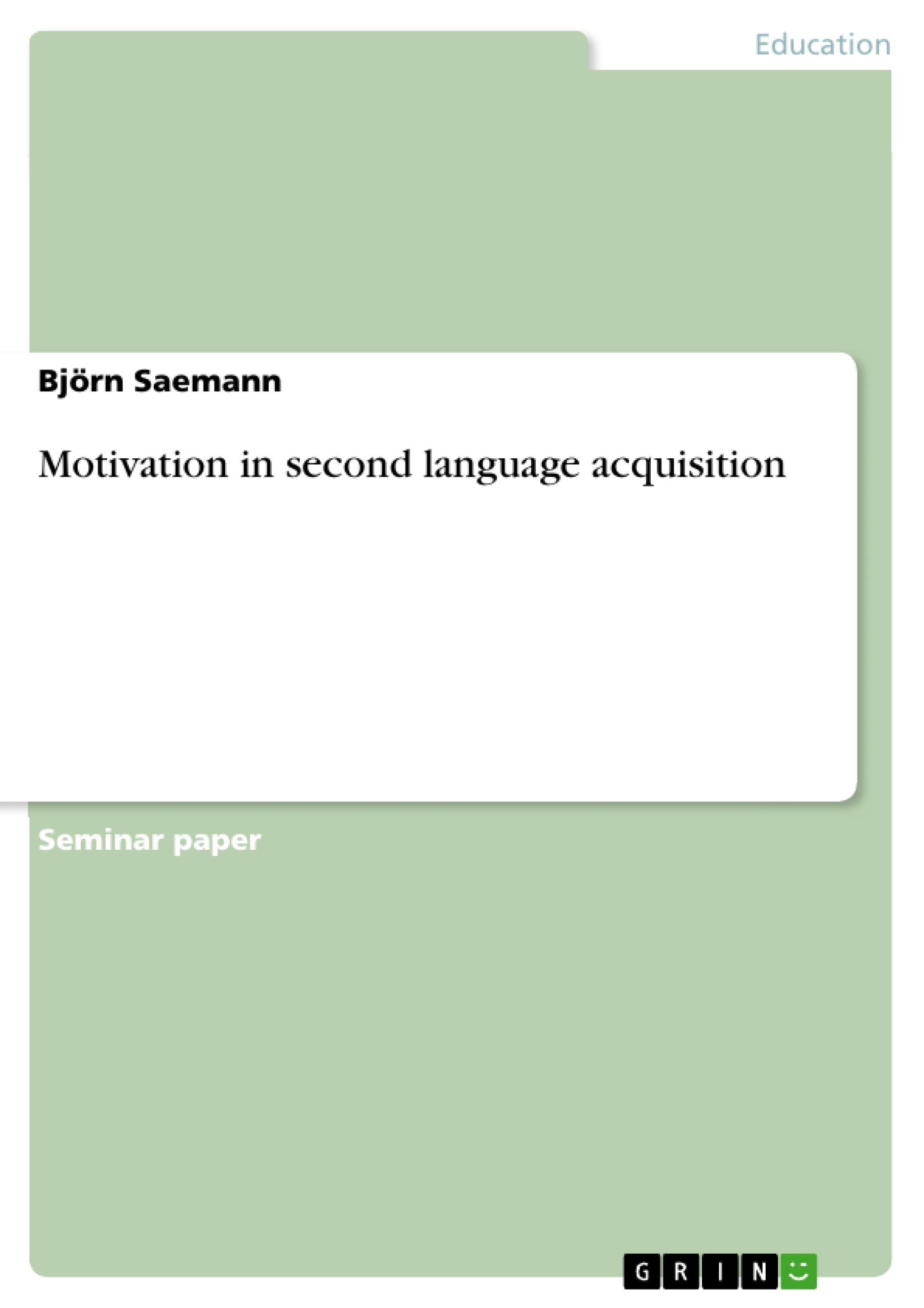This paper is about motivation in second language acquisition. First the term
“motivation” will be defined and explained. Afterwards this paper will explain
what different kinds of motivation exist and how they help to learn language. I
will focus on the work of Rod Ellis and Robert C. Gardner as well as the works
of Kimberly A. Noels.
The final part of the paper will discuss motivation in the classroom and how to
improve the motivation of students as a teacher. For this part I will focuse on
the works of J. Brophy. Motivation is often named together with aptitude. Therefore it is vital to define
the difference between aptitude and motivation.
Ellis (2008:75) states while aptitude describes the “cognitive abilities that
underlie successful L2 acquisition, motivation involves the attitudes and
affective states that influence the degree of effort that learners make to learn
an L2”.
So aptitude is a more or less stable component which the individual can not
directly interfere with. Motivation on the other hand is a component that can
change comparatively fast and can be altered by the learner himself.
Gardner (2001) writes that motivation describes the driving force behind the
effort of a learner. Motivation consists of three elements. The first element is
“effort”. A more motivated learner will put more effort in his or her studies. He
will be open to do extra work in order to improve his language skills, spend
more time with studying for the language and even deal with the subject on a
subconscious level. [...]
Inhaltsverzeichnis (Table of Contents)
- Introduction
- Definition of motivation
- Different kinds of motivation and motivation theories
- Integrative Motivation
- Instrumental Motivation
- Intrinsic Motivation
- Extrinsic Motivation
- Motivation in the classroom
- Conclusion
Zielsetzung und Themenschwerpunkte (Objectives and Key Themes)
This paper aims to explore the concept of motivation within the context of second language acquisition. The paper will define the term "motivation" and delve into the various types of motivation, including integrative, instrumental, intrinsic, and extrinsic motivation. It will then examine the role of motivation in the classroom setting, providing insights into how teachers can enhance student motivation. Here are some key themes explored in this paper:- The definition and significance of motivation in second language acquisition.
- The different types of motivation and their impact on language learning.
- The relationship between motivation and language aptitude.
- The role of the affective filter in language learning.
- Strategies for enhancing student motivation in classroom settings.
Zusammenfassung der Kapitel (Chapter Summaries)
- Introduction: This chapter provides a brief overview of the paper's focus on motivation in second language acquisition and introduces the key authors and concepts that will be discussed.
- Definition of Motivation: This chapter defines motivation and distinguishes it from aptitude. It emphasizes that motivation is a variable factor that can be influenced by the learner. Gardner's three components of motivation (effort, desire, and affect) are introduced.
- Different Kinds of Motivation and Motivation Theories: This chapter explores various types of motivation, including integrative motivation, instrumental motivation, intrinsic motivation, and extrinsic motivation. It also highlights the importance of the affective filter in language learning.
Schlüsselwörter (Keywords)
The primary focus of this paper is on motivation in second language acquisition, specifically exploring different types of motivation (integrative, instrumental, intrinsic, and extrinsic), the role of the affective filter, and practical strategies for enhancing student motivation in classroom settings. Key authors explored include Rod Ellis, Robert C. Gardner, Kimberly A. Noels, and J. Brophy.- Citation du texte
- Björn Saemann (Auteur), 2009, Motivation in second language acquisition, Munich, GRIN Verlag, https://www.grin.com/document/126974



